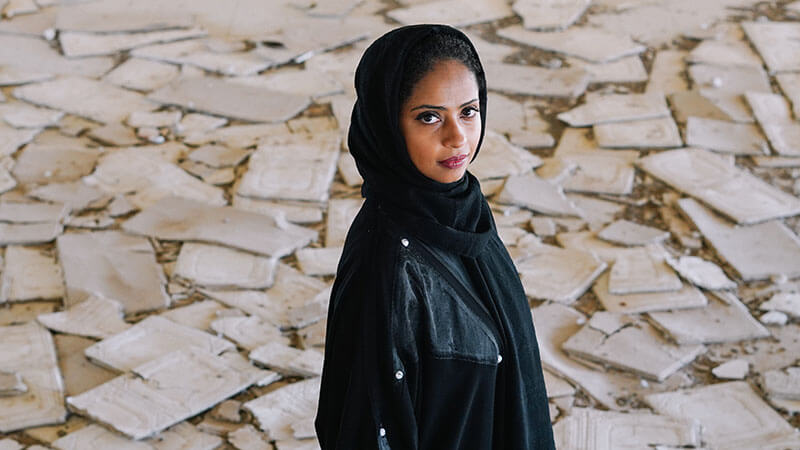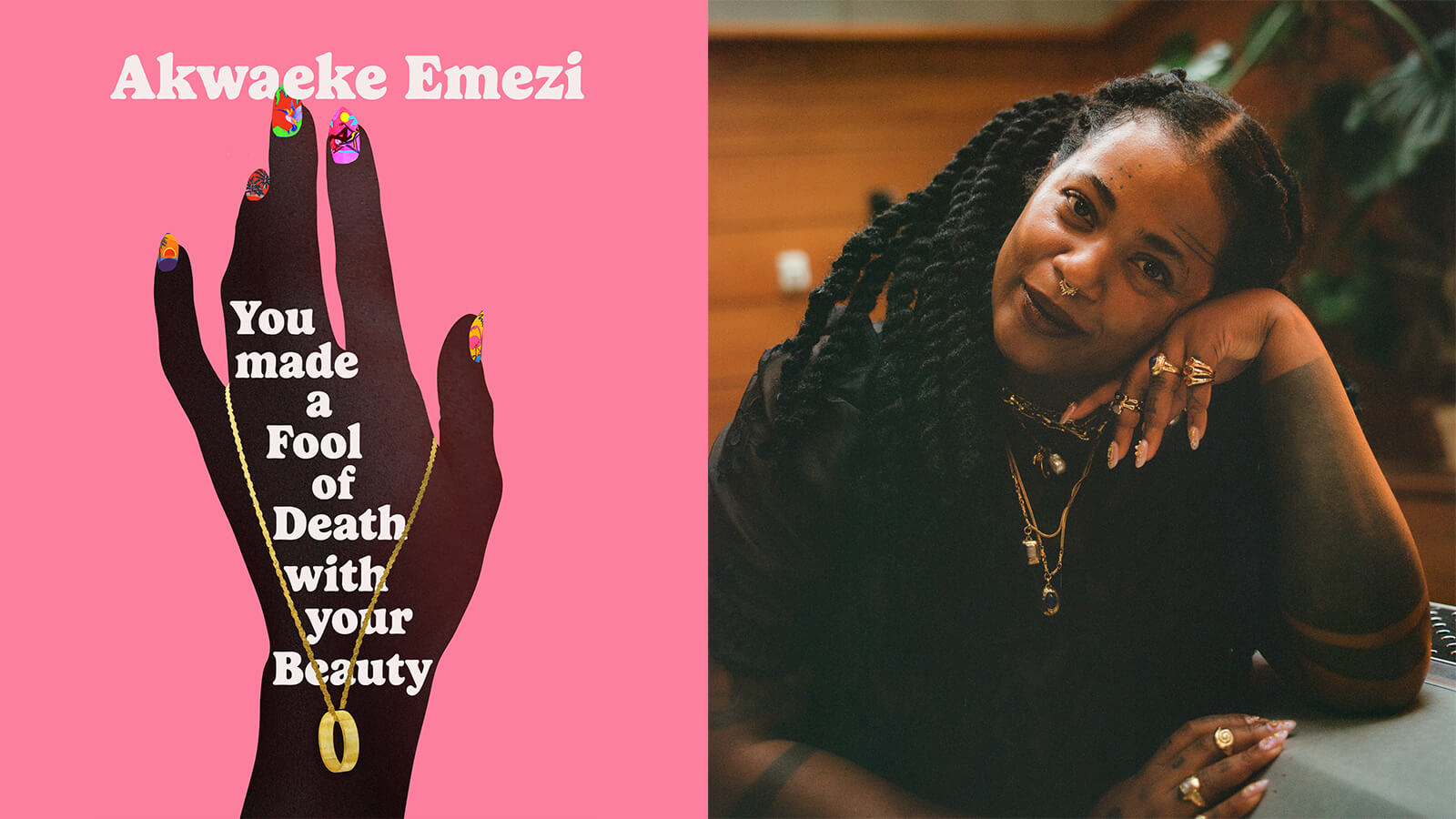Fashion Designer Kazna Asker: “Yemeni People Inspire Everything I Do”
Back in February this year, during London Fashion Week, British-Yemeni designer Kazna Asker transformed the Old Selfridges Hotel into her grandmother’s living room. Models sat on Persian rugs, having Henna applied, while incense burned and visitors enjoyed Yemeni tea and biscuits. Unlike the usual events on the fashion schedule, where industry people come, get a picture, and go with mobiles firmly in hand, Asker’s presentation – aptly titled What Are We Fighting For? – was a place to learn, converse, and appreciate Middle Eastern culture. Alongside her clothes, Asker presented a collage wall featuring photography, text, and other items to address her beliefs and advocate for justice. Palestinian flags were scattered among handwritten notes, prompting viewers with the question: “What Are We Fighting For?”
Activism is woven seamlessly into Kazna Asker’s brand, and she is just as much a storyteller as she is a designer. Through the fusion of film and fashion, as well as placing her community at the forefront of her work, Asker’s primary aim is not merely to ‘make it’ in the fashion industry but to effect positive change, with the platform her designs have given her serving as a vehicle for this. “As much as I like the clothes, I’m more inspired by the people,” she says.

The young designer grew up in the city of Sheffield in the north of England. “Everyone knows each other in Sheffield,” she says. “I think I was always raised in that type of environment, where it always felt like a proper community.” Sheffield has one of the largest populations of the Yemeni diaspora in the UK, and Asker continues to make sure that the people she grew up with come first in everything she does. “Everyone’s an activist in Sheffield, so I was always raised around this, and the Yemeni people here inspire everything I do.”
After finishing her MA degree at Central Saint Martins in 2022, where she made a name for herself for showcasing the first Hijabi collection at the university, Asker self-produced a film titled Fight For Me, Sheffield: “I felt like if I was going to be at London Fashion Week, I needed to introduce my people first,” she says. “And if I have a platform, I feel like they’re more deserving of the platform than me. So it was just to showcase their voices and their perspective.” From post office workers to hat shop owners, Asker ran around her hometown with a camera to give others in her community a platform to tell their stories and talk about the work they do for the city of Sheffield.

The young designer’s socials are filled with videos of her protesting for Palestine, passionately speaking at Sheffield Town Hall about the city’s race equality commission in education, and her appearance on BBC News to talk about her film. It is clear that, unlike many people who call themselves activists, Asker really does put her beliefs above self-reward. She has thought about where in the realm of fashion she should place herself, in order not to have to sacrifice the mission behind her work.
In an industry historically known for being the polar opposite of much of what Asker represents, she’s not naive to the demands it puts on young designers to stay afloat. “I’m still trying to figure out where I fit in or how to navigate it. It’s so hard. I want to continue to work with communities and represent them authentically,” she says. “That’s where the change is going to come from, because there is representation in fashion now, but behind the scenes there is no collaboration. The communities who are doing the work still don’t have their voices heard. So if I can bring their voices in, that would be my goal.”
When it comes to the clothes, though, Asker fluidly blends heritage and tradition with a modern twist. “At big events like weddings, we would see [the elder generation of] ladies in an abaya and hijab, then their sons would be in a tracksuit and puffer jacket,” says Asker. “So my inspiration has always been to merge those two generations of culture, because there’s a middle ground between our grandparents and us, and I wanted to find it.”
More From Service95
Think tracksuit shell jackets with panels of prints inspired by her grandmother’s Persian rugs, and full-bodied skirts to match. “I feel like I’ve only touched the surface of Yemeni culture with my designs. Everything goes much deeper – my family is from different tribes, and each tribe has their perspective on fashion, textiles and culture,” she says. “No one has heard of it before, hardly. There aren’t any books on it. It’s not documented well, so I think it’s cool to do it through my clothes as I go.”
Each region of Yemen has its own intricately unique fashion history. “My family are from the Yafa’a region and are what’s known as ‘the people of the mountains’ – all their fashion is hand-embroidered. Then if you go to Hadhramaut, their tribes are descendants of Queen of Sheba and Ethiopia. Even though they are only two hours apart, they have completely different fashion.”
The overall goal for Asker is clear: to spotlight Yemen. “We have been going through the world’s largest humanitarian crisis for the last 10 years,” she says. She mentions how she went to Egypt last year to visit her cousins from Yemen, who were seeking asylum there. “After everything they’d been through, with the warfare and the poverty, they were still so happy to see me and wanted to look after me and provide for me,” she says. “I feel like that’s a testament to the Yemeni people, their morals and their values. I want to show that, humanise them and tell their stories so people can relate to [them]. Yemen isn’t just a faraway place that’s going through warfare, we are real people with the most genuine hearts.”
Pia Brynteson is Content Editor at Service95





